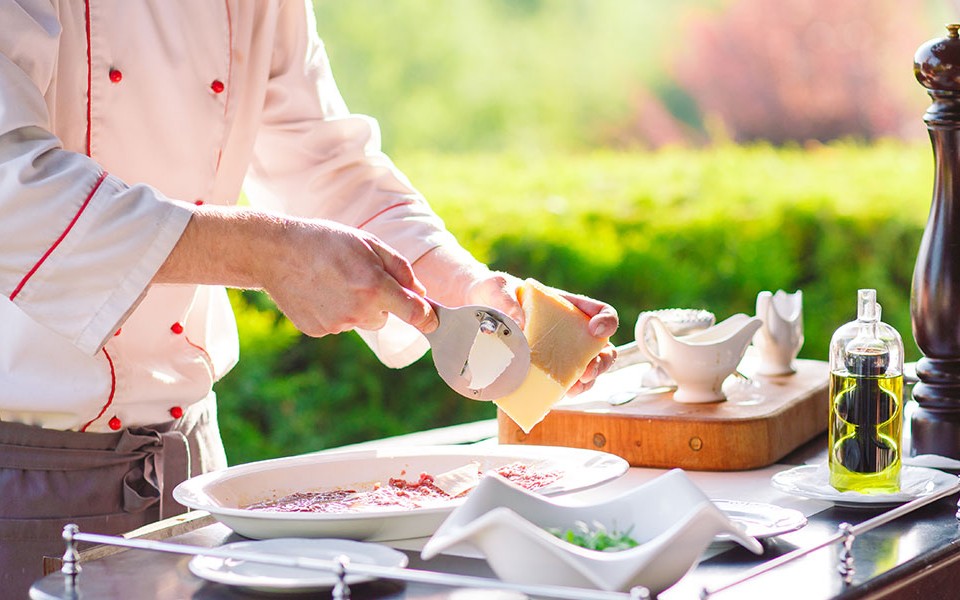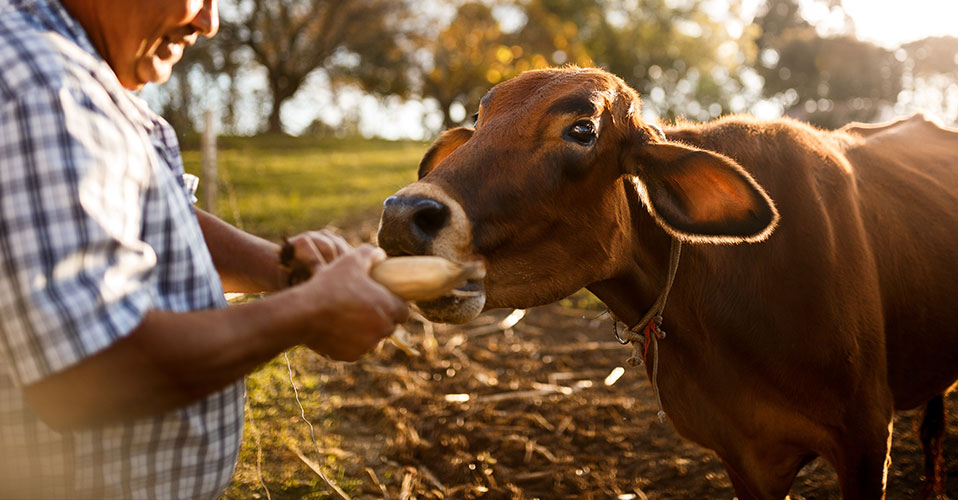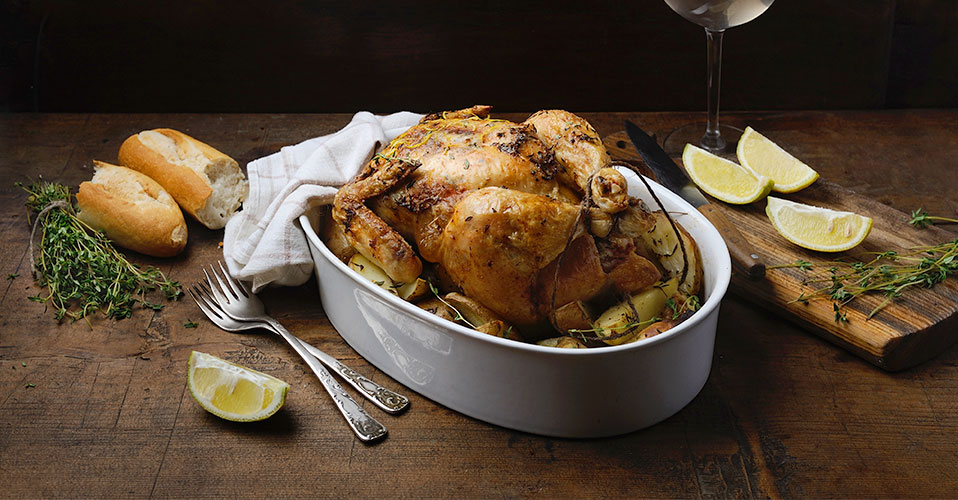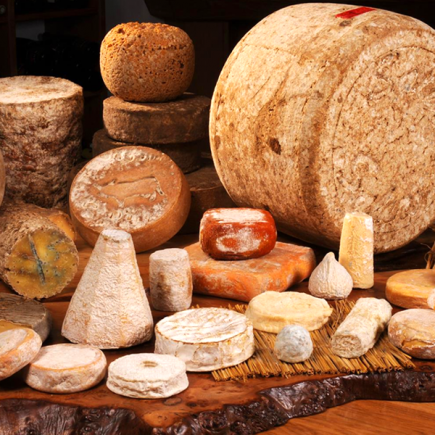
Nouvelle cuisine. Molecular gastronomy. Foraging. Food trends come and go, but there is one theme that animates the cuisine and philosophy behind all of the world’s top restaurants, and has done for centuries — seasonality. Step into any world-class kitchen and you’ll see it’s working magic with ingredients representing the best which nature has to offer, and capturing the unique mood and atmosphere of each season.
Is there anything that evokes the cool spring breeze and the tantalising aromas of blooming flowers like lamb, asparagus and apricots? What’s more comforting on a chilly autumn night than a stew of root vegetables, or a side of roast beef with a velvety celeriac puree? And if winter brings with it bleak, treeless vistas and biting winds, at least it also heralds the start of truffle season, and as chefs around the world launch entrancing truffle menus, you might just leave your arduous festive shopping behind for a couple of hours and breathe in pure luxury.
Three reasons to go seasonal

Supporting local farmers
It’s more imperative than ever for the culinary industry to support local farmers. It’s not just about the principles of supporting environmentally sustainable agriculture, contributing to the local economy and preserving a sense of locality in our cooking. It’s also about standing up for the craftsmanship and individualism increasingly threatened by faceless corporatism. When it comes to an activity as intensely personal as dining, the indelible touch of a passionate artisan is an invaluable one — and no one knows this better than a chef. By buying not only what is in season, but what is in season in our immediate vicinity, we can play our part!
Cost savings
At the end of the day, restaurants are not only our pride and our joy, also our livelihood. And when it comes to the bottom line, shopping seasonally can generate significant cost savings. Food that’s in season is, by definition, food that’s at the peak of its supply, and that means costs savings all the way down the supply chain from the farmer to the restaurant and our diners.
Flavours and inspirations
Chefs never stop looking for inspirations. We find inspiration in our childhood memories of comfort food, our travels and ensuing encounters with exotic cuisines, and the recipes of the chefs we admire. But arguably, the best source of inspiration is also the source of the fantastic produce we work with — Mother Nature herself. If you look to nature for inspiration, your wellspring of creativity will never run dry.
On that note, we’d like to suggest five of our favourite seasonal ingredients for spring, summer, autumn and winter. If you’re looking to jazz up your menu and get your creative juices flowing, look no further!
Seasonal inspirations

Spring
Spring is all about vegetables. And with chef Alain Passard’s The Art of Cooking with Vegetables making its way back into the limelight, the time has never been riper, creatively and commercially, for vegetable-focused cookery. Here are three our our favourite spring ingredients!
1. Asparagus — White asparagus gets all the glory, but we think its green cousin is equally delicious. Whether it’s simply steamed with a hollandaise sauce or chargrilled for a beautiful caramelised flavour, asparagus is the essence of spring.
2. Morels — The king of mushrooms, morels are rivalled only by truffles when it comes to aroma and flavour. Dried morels are wildly popular (and expensive) during the rest of the year, so take advantage of spring to get some fresh specimens at relatively bargain prices!
3. Turnips — The perfect turnip is one that strikes a balance between sharpness and sweetness. At the end of spring, turnips demonstrate this precise balance and add freshness to any dish.
Summer
As the scorching summer sun makes its emergence, you’ll want to be focusing on light, clean and refreshing dishes that go well with a crisp white wine or an ice-cold beer.
1. Tomatoes — Need we say more? Seasonal tomatoes dressed with a little top-quality Mediterranean olive oil, fresh basil and warm ciabatta or sourdough bread is one of life’s greatest, yet simplest pleasures.
2. Lamb — While spring is often regarded as peak lamb season, lambs slaughtered in early summer tend to have a richer, deeper flavour from the extra grazing. It might come at the expense of a little tenderness, but careful cooking and resting will mitigate that.
3. Melon — A slice of sweet melon is exactly what you need on a sweltering summer’s day. Wrap with parma ham for a classic Italian snack, or blend with a little cream and ice for a thirst-quenching smoothie. Or if you’ve got time — make melon ice cream, which is extremely popular in Japan and is an underrated summer snack.
Autumn
As the weather turns chillier, the palate cries out for richer stews, soups and sauces to warm your cockles and provide some homely comforts on a rainy fall day.
1. Venison — Autumn is the beginning of game-hunting season, and venison is one of the highlights. As venison is very lean, it needs to be treated carefully. Either sous-vide before finishing in the pan, or basted with plenty of butter to prevent it from drying out. But done right, it’s well worth the effort.
2. Brussels sprouts — The key to getting brussels sprouts right is balancing out their characteristic bitterness with full-flavoured, savoury complements such as bacon or parmesan cheese.
3. Cauliflower — Cauliflower is so versatile, every kitchen should have it on their autumn menu. It can be pureed, turned into a crumb, served as cauliflower cheese or even roasted and served as a main course! And in autumn, the characteristic sweetness of cauliflower really comes to the fore.
Winter
As the festive season approaches, diners everywhere roll up their sleeves, loosen their belts and get ready for some serious feasting. Hearty food is the name of the game.
1. Seafood — This isn’t the most specific recommendation we could’ve made. However, most seafood, particularly large saltwater fish and shellfish, is in absolutely peak condition at the end of the year, as they ramp up their food consumption to prepare for the winter ahead. We particularly recommend brill, skate and lobsters.
2. Butternut squash — Squash pulls off the unusual trick of tasting incredibly rich while actually being incredibly healthy. We all consume far too much sugar, butter and alcohol during the festive period. If you’re looking for a more nutritious respite from Bacchanalian indulgences, have a go at squash.
3. Citrus fruits — While the mere mention of oranges and lemons conjures up images of bright summer sunshine, winter is actually when citrus fruits are at their juiciest and sweetest. From blood oranges to lemons, adding a bit of zesty, palate-enlivening sharpness to your winter recipes will bring freshness and complexity to your dishes.
From the very earliest days of gastronomy, chefs have drawn inspiration from the seasons, and nature’s ever-morphing array of bountiful produce. When what’s in season changes from one week to the next, a chef who embraces seasonality must stay on his toes, flex his creative muscles and adapt. The rewards — both for the chef, and the diner — are well worth the effort.

